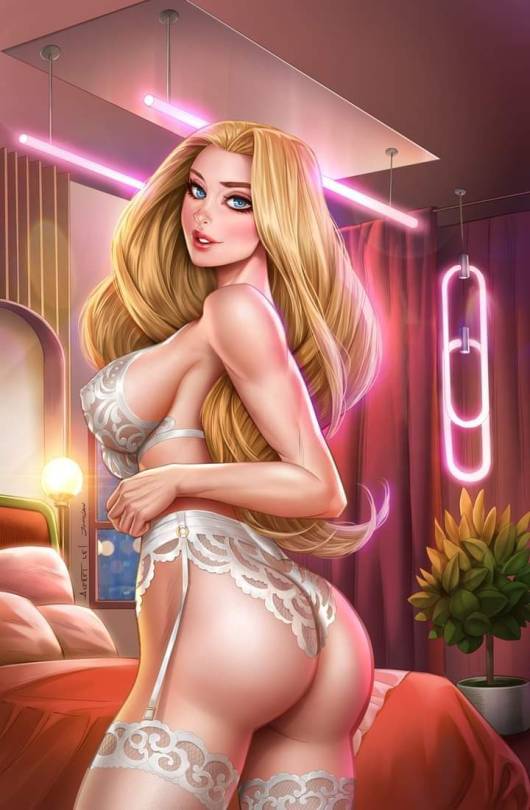anything that makes my bi cock twitch not intended for anyone under 18
3K posts
Latest Posts by kaivenna - Page 8


In neopaganism the horned god is seen with two different faces representing the duality of nature and the changing of seasonal cycle. The theory of these two aspects of the god was debated by Sir James George Frazer in The Golden Bough and by Robert Graves in The White Goddess.
According to these theories old religions were fertility cults that revolved around the worship and periodic sacrifice of a sacred king. Frazer based his thesis on the pre-Roman priest-king Rex Nemorensis who was ritually murdered by his successor. The king was the incarnation of a dying and reviving god, a solar deity who underwent a mystic marriage to a goddess of the Earth. He died at the harvest and was reincarnated in the spring. This legend of rebirth is central to almost all of the world's mythologies. Some examples of this archetypical figure are the gods Dionysus, Osiris, Tammuz, Dumuzi, Adonis, Janus, Attis.
The two aspects of this figure take the names of Holly and Oak king.
The Holly King is seen as an old version of the green man, ruler of winter, death and darkness. He starts his kingdom at summer solstice when, after the longest day, ruled by his opposite king the oak king, the days start to get darker and shorter entering in the dark half of the year. The holly king is so called referring to the plant that is fruitful during the winter season. The holly king is also referred to as a black knight and is also connected with the dark aspects of many pagan gods.
Counterpart of the Holly King is the Oak King that is usually seen as a young green man, ruler of summer, life and light. He starts his kingdom at the winter solstice, when after the darkest night a new light is reborn, signing the beginning of the light half of the year. The oak king is called over the name of the plant that is fruitful during the hot season. Opposite to the Holly King, the Oak King, relates to the light aspect of many pagan gods and its sometimes referred to as a white knight.
According to the theory these two kings may be seen as two brothers fighting for the throne or as a father and son passing the kingdom to each other in a perpetual cycle of death and rebirth. This cycle of life and death represents the seasonal cycle of death and rebirth of the sunlight and vegetative world.

You took your wife to a concert. She made a friend.



Bruce Timm - Psylocke







Cernunnos



Cernnunos laser engraved on a piece of found steel.


Watching her get laid is pretty incredible.
But the dance leading to that is pretty awesome too.


Does it turn you on that everyone knows your wife sleeps with other men?
youcanhavemywife.tumblr.com



Cernunnos - Ari-Matti Toivonen



Misunderstanding
I received a note from someone who was upset I “failed to cite Scott McCloud’s Understanding Comics” in my research for my work on Neil Gaiman's Chivalry and the essays I wrote about it.
I really appreciate that people want to make sure credit goes where it's due, and I have a lot of respect for Scott McCloud's accomplishment with his wonderful book.
I haven't read it myself in some years, and didn't cite it in my articles because I didn't reference it. I don't even know where my copy is so I don't know what McCloud referenced, either.
The information in my articles re: illuminated manuscripts and the Bayeux Tapestry, as well as other theories about the development of sequential art from prehistory, not only predate McCloud's work (and in fact, predate McCloud's birth,) but they are so common and so well known in comics circles that asking me to cite them seems as weird to me as asking me to cite the information that George Washington was the first President of the United States.
A part of me wonders if someone is trying to play, "Let's you and him fight."
No.
But I’m happy to bring to your attention some reading material.
Stephen Becker in his 1959 work Comic Art in America: A Social History of the Funnies, the Political Cartoons, Magazine Humor, Sporting Cartoons, and Animated Cartoons was among the first to discuss the Bayeux Tapestry as comic art. I read that book sometime in the 1980’s. I think a lot of people assume the Bayeux tapestry as comic art was McCloud’s idea, but we don’t all walk around with a reference library in our heads, so there you go. I can’t find my copy of Becker’s work to quote, but I did find an article by Arthur Asa Berger with a mention of the Bayeux Tapestry as comic art in the summer 1978 issue of The Wilson Quarterly.

My first exposure to the idea of comics as descendant of fine art was Maurice Horn’s 1976 The World Encyclopedia of Comics which was my first read re: comics history. I still have my tattered 1976 edition.
While Horn scorned the idea that tapestries and manuscripts could be comic art (see, it was a matter of discussion way back then, so much so that authors were writing snarky asides to one another about it,) he believed the origin of sequential art was in the Renaissance sketches of Leonardo da Vinci - which I think everyone now agrees is kind of a bonkers idea.

I think Horn was just intent on elevating the comic art form by hooking up with da Vinci.
You go, boi.
Comics as descendant of art on scrolls is a very common theory, the easiest to trace being in Manga! Manga! The World of Japanese Comics by Fred Schodt published in 1983 when I was still a teenager. I can't find my copy to show examples, but this text is still in print and you can go read it for yourself.
I was introduced to manga by cartoonist Leslie Sternbergh and bought Schodt’s book at Books Kinokuniya on (I think) a trip to New York around the time of first publication of Schodt’s work. And years later took a trip to Japan with Fred Schodt and a group of cartoonists including Jeff Smith and Jules Fieffer, Nicole Hollander, and Denys Cowan as the guests of Tezuka Productions.
Here we all are.

So, I’m familiar with manga, see.
As for comics as descendant of cave paintings, hieroglyphics and ancient art in general, Will Eisner’s 1985 Comics and Sequential Art not only made all of those points, but made those points with comic art examples. Like these.

And this.

And this.

And more than a few words on this:


I find it amusing that someone is questioning why I didn’t cite McCloud when what you should probably be questioning is why more people don’t cite Eisner who produced his book eight years before McCloud published his and who is well known to have influenced McCloud.
Whatever. My book's autographed.

I also danced with Eisner. Eat your heart out.

Understanding Comics is a terrific work with huge advantages over every book (that I know of) about comics that came before: it taught comics entirely in the language of comics.
But the discussion in it about the origins of comics and my work especially re: illuminated manuscripts/tapestries, did not originate with McCloud. I research illuminated manuscripts because it’s my hobby and it informs my art.
I encourage everyone to read Understanding Comics because it is an outstanding work.
But it’s not the book that introduced me to the concepts of the development of comic art. It’s not even the point of origin of those concepts. So, there is no reason to cite it.
Also, shocking as it may seem, I occasionally come up with ideas on my own. While I'm younger than McCloud, I've actually been a comics pro longer than he has. So I've had plenty of opportunity to, you know, read things and toss things around, and decide for myself.
When I first read Chivalry and first begged Neil Gaiman to let me adapt it, my head full of the work of Alberto Sangorski and his art for Tennyson’s Le Morte D’Arthur, Understanding Comics hadn’t been published yet.
It's been a good twelve years since I last read McCloud's work, and I don't think I've spoken to him five times in the last three decades. But I'm pretty sure he never mentioned Sangorski.
I hope that clears everything up, and maybe introduces some of you to some works you might not be aware of.
Have a great day.








X-Men (and Captain Britain) by Julio Cesar Leote - part two
